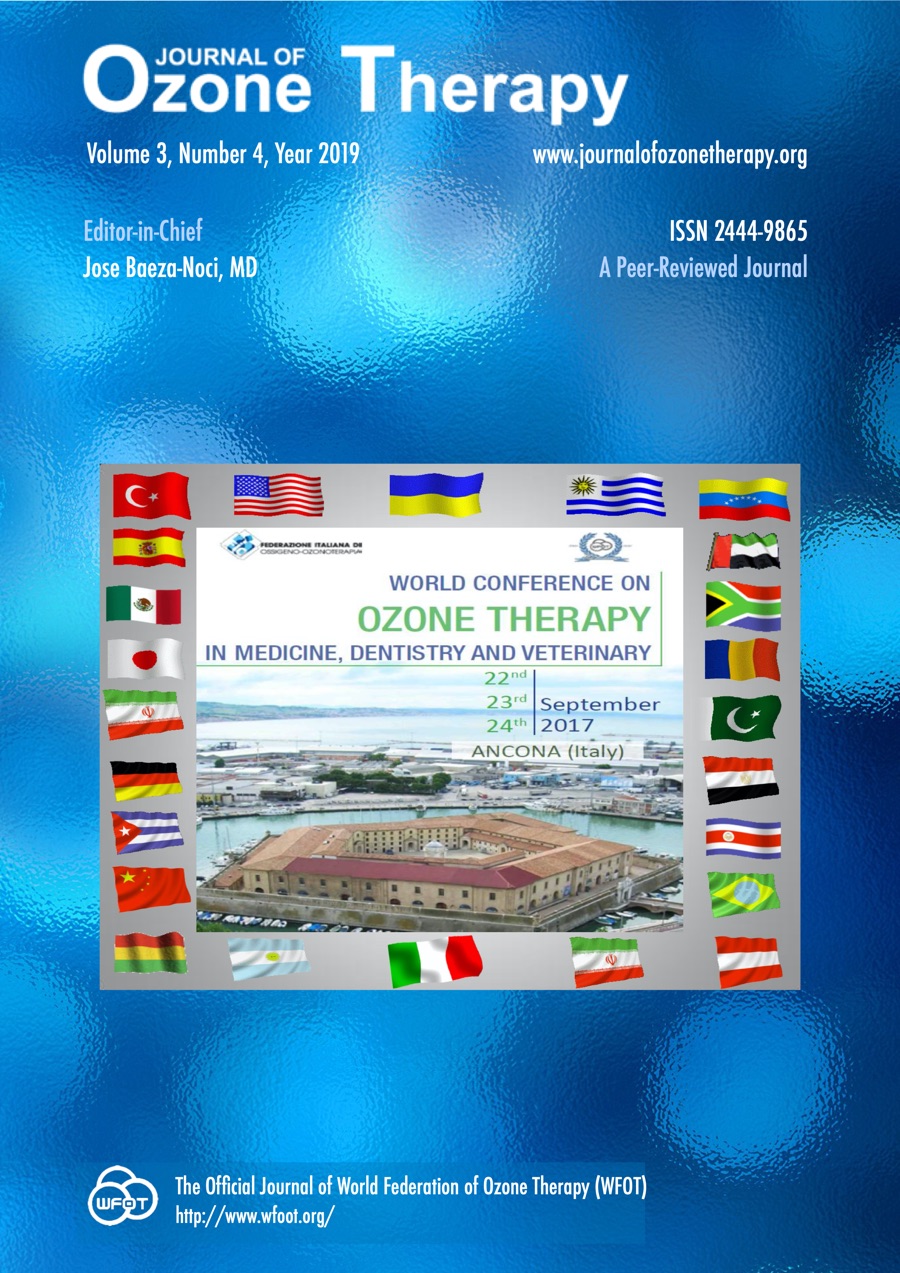The effect of ozone therapy on experimental bone fracture healing in rats [abstract]
DOI:
https://doi.org/10.7203/jo3t.3.4.2019.15511Palabras clave:
ozone therapy, bone healing, experimental fracture Resumen
Resumen
BACKGROUND: In the literature, many beneficial effects are attributed ozone; it balances the oxidant-antioxidant system, leads to delivery of super enriched oxygen at a cellular level and optimizes cell function, etc.
PURPOSE: The aim of this study was to evaluate if there is a positive impact of ozone therapy on bone healing in an experimental fracture model in rats.
MATERIAL and METHODS: After approval of experimental animal ethic committee, an open femoral fracture (ffx) was performed in 48 male Spraque Dawley rats. They were randomly divided into two groups: in Group O, medical ozone/oxygen mixture (500 mg/kg) and in Group C, medical air in volume of 4 mL were given rectally for 3-days. At days 4, 7 and 13, eight rats from each group were euthanized, and histomorphometric and immunohistochemical bone tissue evaluation was undertaken from the femur sampling.
RESULTS: Histomorphometrically, periost thickness was thicker, trabecular areas were larger, cartilaginous and new bone areas were smaller (p<0.05 for each) and TGF-? expressions were more intense in Group O (p<0.001 for all times). Immuno-histochemically, a significant increase in VEGF expressions in day 7 and 13 (p<0.001 for each) and higher ?-catenin
expressions were observed in Group O at day 7 and 13 (p<0.001 for each).
CONCLUSION: At the clinical application, we believe that ozone application will result in better and faster bone healing that leads to decrease in hospitality time, early return to work, decrease the incidence of complications. The current data indicate that ozone therapy could have positive impacts on bone healing process.
 Descargas
Descargas
 Citas
Citas
Le AX, Miclau T, Hu D, Helms JA. Molecular aspects of healing in stabilized and non-stabilized fractures. J Orthop Res. 2001;19(1):78-84.
Wohl GR, Towler DA, Silva MJ. Stress fracture healing: fatigue loading of the rat ulna induces upregulation in expression of osteogenic and angiogenic genes that mimic the intramembranous portion of fracture repair. Bone. 2009;44(2):320-30. doi: 10.1016/j.bone.2008.09.010.
Yavropoulou MP, Yovos JG. The role of the Wnt signaling pathway in
osteoblast commitment and differentiation. Hormones. 2007;6(4):279-294.
Descargas
Publicado
Cómo citar
-
Resumen1437
-
PDF 338
Número
Sección
Licencia
Journal of Ozone Therapy publica bajo la licencia Creative Commons Attribution-NonCommercial 4.0 International License.




